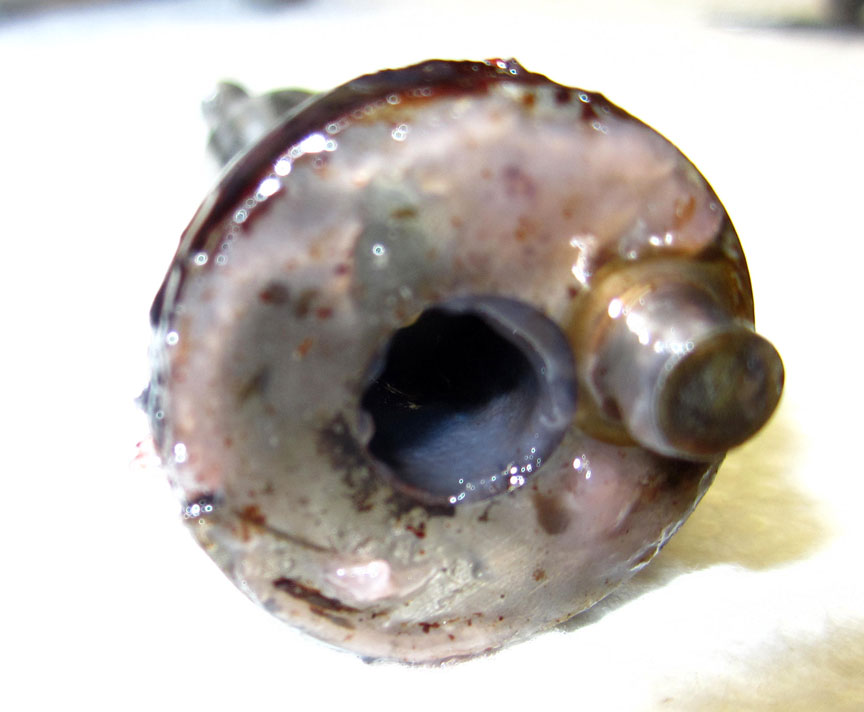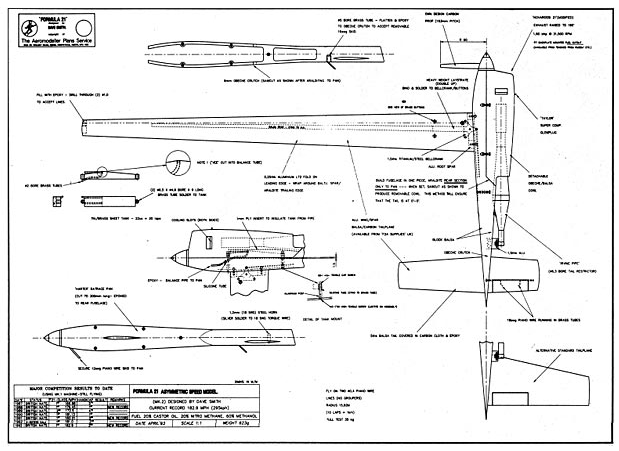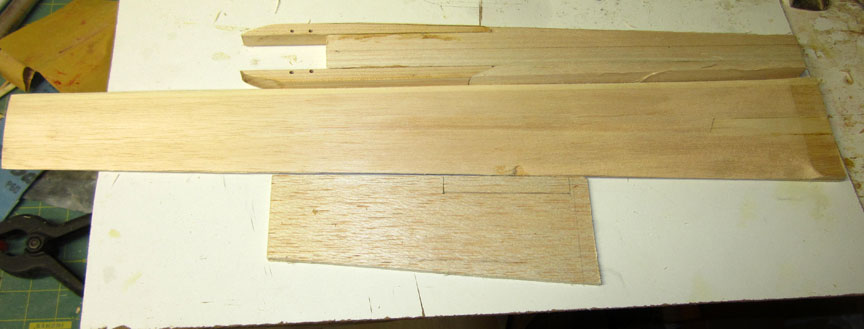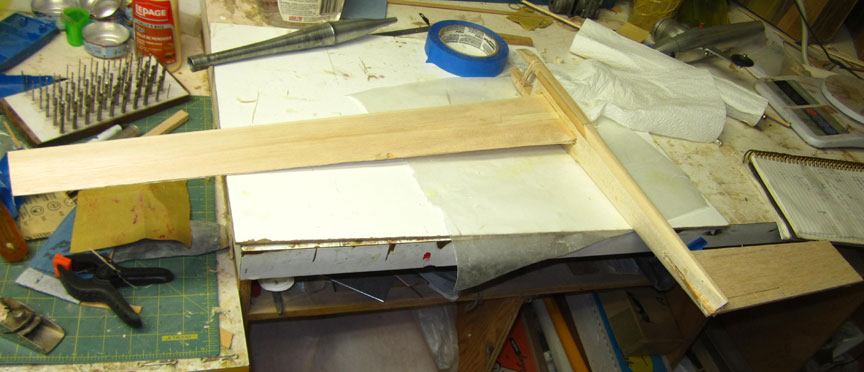A View from Broadway
A simple, functional F2A Speed plane. All photos by Ken Burdick.
F2A, the beginner's version
 By Ken Burdick
By Ken Burdick
December 2019
Yes Folks, it’s true.
Dipping one’s toe into the world of F2A speed is like being Little Red Riding Hood. Not quite sure of the waters, thinking you are going to a simple lunch with Granny only to discover the wolf.
I recently won a prize at the Northwest Control-Line Speed Championships in Salem, Ore., and one thing led to another, which seems to be par for ol' Kenny. What was it you say -- nothing short of a beginner engine and pipe for the international speed event labeled F2A? These are 2.5cc engines that run in the 40,000 RPM range, and if you look at them wrong, will not perform. So, why you ask would anyone do such a thing?
Brain damage, boredom, bad genes -- who knows. Like they say, there is no “free horse” and this is certainly not the exception.
I began thinking of trying F2A a few years ago and it’s been tugging on my coat ever since. This was just the thing to kick-start yet another run at the project.
 Where to begin?
Where to begin?
There are so many places to start something like this, I hardly know what cliff to jump from first.
- Buy several thousand dollars’ worth of equipment and see what happens -- No.
- Go on the Internet and ask the Eastern Block guys for advice -- Maybe later.
- Ask the maybe unscrupulous Internet suppliers to suggest engines and equipment -- No.
- Start with something simple and go from there -- OK.
Simple No. 1
Or: Covered in Goo!
 So, lil' Geezers, we have here an example of something simple. It’s an engine and pipe made by MDS and has been around for some time. The design is clearly copied from Rossi, but it LOOKS OK, so let’s forge on ahead. The whole idea of a trainer is to master taking off, whipping the tuned pipe on to its peak stages of which I am told there are three. Also, you can hold the thing back so as to heat the engine up. With a pipe, you want heat at the right temperature (whatever that is) to get the sonic wave in the pipe to time correctly and ram the unburned fuel into the chamber before the piston closes -- phew! That’s todays lesson on tuned pipes.
So, lil' Geezers, we have here an example of something simple. It’s an engine and pipe made by MDS and has been around for some time. The design is clearly copied from Rossi, but it LOOKS OK, so let’s forge on ahead. The whole idea of a trainer is to master taking off, whipping the tuned pipe on to its peak stages of which I am told there are three. Also, you can hold the thing back so as to heat the engine up. With a pipe, you want heat at the right temperature (whatever that is) to get the sonic wave in the pipe to time correctly and ram the unburned fuel into the chamber before the piston closes -- phew! That’s todays lesson on tuned pipes.
Also, if you are following the accepted theory of today, you are flying a sidewinder with one wing and only an outboard stab. These things do not take off without help. So, I need to practice my footwork without destroying much-o bucks-o in the process.
The engine we’ll call “Little Boris,” is right out of old mother Russia. It is made of not-so-great parts for F2A and clearly intended as a primer type thing. On the outside, it looks pretty sharp, but when I opened lil' Boris up, even I was shocked.  Inside the case, it was packed with what looked like cosmolene, or Vaseline jelly (right). The thing was stuck after maybe 15 years or more of digesting this stuff. I was able to get it apart and after an hour of work with lacquer thinner and various brushes and heat, was able to get the rear bearing to turn again.
Inside the case, it was packed with what looked like cosmolene, or Vaseline jelly (right). The thing was stuck after maybe 15 years or more of digesting this stuff. I was able to get it apart and after an hour of work with lacquer thinner and various brushes and heat, was able to get the rear bearing to turn again.
Trust me when I say, the maker of this engine took notes from good old Duke Fox -- no bushings in the con rod, bearings with folded tabs and a head that looks like it’s from a Cox .15 (not bad, actually) .
The piston and liner were just OK. The ports needed deburring which I did, the piston is not cut away for breathing so it’s something like a good engine out of the 1960’s. The chrome work, however was top of the line (except the burrs). The crankshaft port was nicely rounded so no worries about it cracking there.
Anyway, little Boris will be fine for training purposes, and I’m not expecting great things from it.
I have already had to go looking for additional glow heads for the “free engine.” I found some in the mother-land at $6.95 each on eBay. I hope to get my footwork done in less than 6 plugs. Did I mention props? I also located Steve Wilk, owner of Eliminator props, deep in the Minnesota woods doing some sort of thing there. Anyway, he is making up a couple of props for me at $20 ea. These are assembled with counterweight so that helps with the sticker shock. I’ll start out with an APC racing prop to see if it flies.
 What to fly?
What to fly?
Honestly, the F2A airplanes of today are made to the finest standards using CNC machinery. Stabilizer cores covered in carbon fiber, beautiful wing roots and spars covered with aluminum skin, or carbon fiber wings, fuselages cut from CNC routers and pans that are beyond anything made in the U.S. In short, the airplanes are works of art with many years of R&D behind the designs. The top guys are now well faster than 300 km/ hr (186 mph) and just recently 308 was turned! So these tiny aircraft are subject to high stresses, they have to be well engineered to fly stable at these speeds.
I’m not going to learn what I need to learn on one of these fine pieces of work, so I’ll build a trainer to learn the fundamentals of foot work and pylon technique. I was recently shown by John Newton, to change my footwork by angling my left foot more before setting it down while going around the pylon. He said that will save steps in going around the pole. I tried it and went from seven steps to five, but that was at 138 mph, slow compared to what I’m dangling my foot into.

I have seen several F2A trainers on Facebook so I looked up one and copied it. Simple as a mud fence, but it balances correctly and hopefully will fly as intended. The intent of this model is to emulate a real asymmetrical model, not only in flying, but also in taking it off from a dolly. All this will go into my training so as to avoid damaging a decent full on F2A model.
Here are some pictures of the one-arm bandit.


Well, lil' Geezers, that’s it for now. All that’s left to do is build a dolly. I’ll keep you up to date on the progress and where the project goes from here. I have made arrangements for a competitive model so the transition from simple to complex will be a simple turn of a key. I’ll keep you all in the ground loop as things develop.
-- Kennyb
Back to Bod Busters main page
Back to Speed main page
Flying Lines home page
This page was upated Dec. 5, 2019

